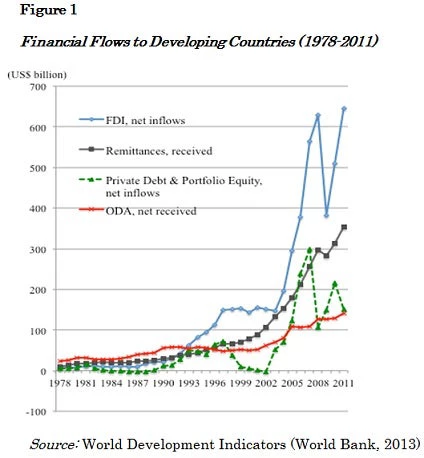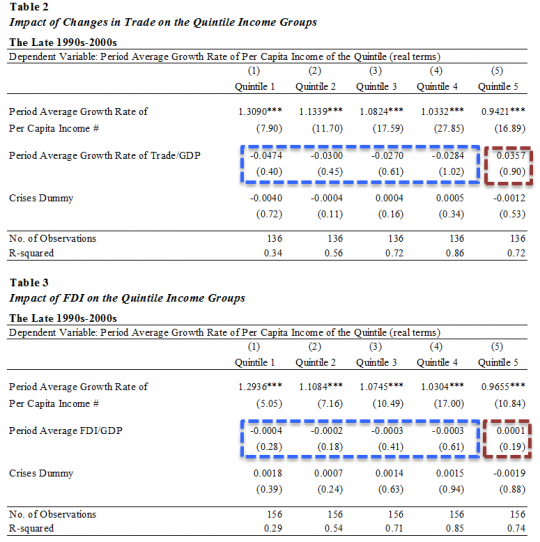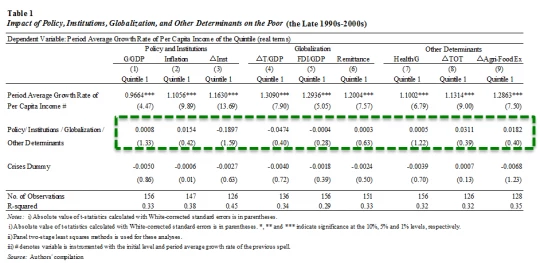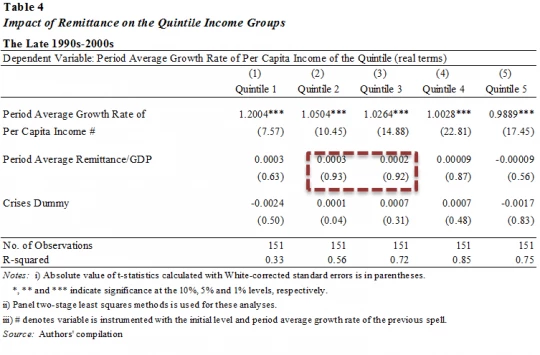In the context of development, globalization has always had two facets. For the advocates of globalization, it has facilitated financial and economic integration around the world and has played a substantial role in reducing poverty in many developing countries. For those who oppose it, it has introduced new challenges such as economic structural changes, huge income inequality and development disparities across and within developing countries. The changing development landscape with globalization calls for the necessity of reconsidering effective development aid strategies.

Globalization and Inequality
Numerous past studies confirm that globalization, or economic integration, contributed to poverty reduction through higher growth, on average. However, some have argued that globalization did not benefit the poor (Fischer, 2003; Milanovic, 2005; Ravallion, 2005; Harrison, 2006). That is, at best, globalization did not help the poor more than other segments of society. It may have hurt the poor in favor of the rich. The recent articles in The Economist (Sep 2nd 2014; Aug 23rd 2014) also highlighted the continuing globalization-inequality controversy.
One of the most influential papers by Dollar and Kraay, Growth is Good for the Poor (2001), revealed that the poor benefited from growth, with empirical evidence that the income of the bottom quintile increased equiproportionally to that of the national average. At the same time, they did not find any factors of openness, globalization, policy, or institutions that had systematic effects on the poor other than through growth. In the end, Dollar and Kraay emphasized the importance of growth, as well as policies (including openness policies) and institutions that contribute to growth, for poverty reduction. Their latest paper, Growth Still is Good for the Poor (Dollar, Kleineberg, & Kraay, 2013), reaffirms the importance of growth, while they end up concluding that there is no robust evidence that certain policies, such as openness, education, and health expenditures, are particularly “pro-poor” or conducive to promoting “shared prosperity” other than through their direct effect on overall economic growth (p. 18). The challenge remains to find out if there is any factor that leads to poverty-reducing distributional changes.
Challenges
With these end results and assertions, we came up with a question: “Is aid good for the poor?” We opine that if the ultimate goal of development aid is to achieve poverty reduction, aid should benefit the poor more than other income groups. We conducted a series of cross-country regression analyses in order to examine whether or not aid has any systematic pro-poor effects that benefit the poor other than through growth. The study used the newly constructed database of aid sectoral data (economic aid, social aid, and aggregate aid) and quintile income data. We also reexamined with the new data if the factors of globalization, policy, and institutions had any systematic effects on each income group over their impact on growth, in comparison with the effects of aid. If the factors of ongoing globalization tend to exclude the poor from sharing benefits, aid is even more important in enabling them to benefit from growth driven by the same elements of globalization.
Globalization may not be Good for the Poor
Table 1 shows the results, which we regressed the changes in the incomes of the poorest quintile on the changes in average incomes with variables of globalization (trade, foreign direct investment, remittances), as well as policies (government expenditure, inflation management), institutions, globalization, and other potential pro-poor factors. The study reconfirmed that none of these factors had any systematic effect on the poor, over their effects on growth, as the past literatures shown.
Globalization may not be Good for the Poor, but may be Good for the Rich
Tables 2 and 3 shows the results, which we regressed the changes in the incomes of the each quintile income group on the changes in average incomes with variables of globalization - trade and FDI. This study found that trade and FDI had positive effects only on quintile 5 (Column 5 in Table 11; Column 5 in Table 3), albeit a statistically insignificant effect, over their effects on average income growth. These findings are similar to what Milanovic (2005) found in his study: the rich benefit from openness in a developing country (in very low income countries in particular). Even though the poor can benefit through growth, which is accelerated under globalization, there seems to be a consensus that the rich, on average, tend to benefit more from globalization (trade and FDI).
Table 4 shows that overseas remittances tend to benefit Quintile2- Quintile 3 segments of the developing economies. Though statistical significance is still low, the pro-poor nature of labor market integration may have a huge future potential given the rising size of remittances as shown in Figure 1. However, the poorest (Quintile 1) tends to be excluded from this expanding opportunity under globalization.
Policy Implications
While the facets of globalization do not necessarily benefit the poor directly, or even tend to exclude the poorest, presented evidences suggest that aid can play a crucial role in enabling the poor to benefit more from globalization. A right mix of economic aid and poor-enabling social aid that creates access to trade- and FDI-induced opportunities and social aid that enables the poorest to participate in overseas work should go a long way.





Join the Conversation